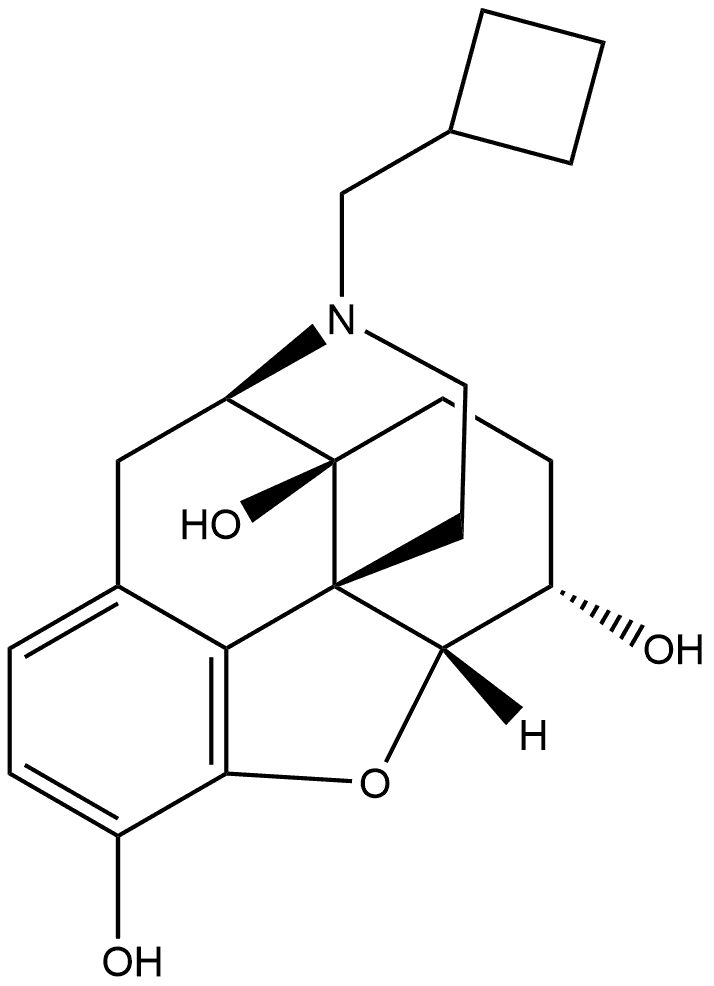
NALBUPHINE
- русский язык имя
- английское имяNALBUPHINE
- CAS №85284-04-4
- CBNumberCB4837381
- ФормулаC21H27NO4
- мольный вес357.44
- номер MDLMFCD00864358
- файл Mol85284-04-4.mol
химическое свойство
| Температура кипения | 566.6±50.0 °C(Predicted) |
| плотность | 1.44±0.1 g/cm3(Predicted) |
| пка | pKa 8.7 (Uncertain);10.0 (Uncertain) |
| FDA UNII | L2T84IQI2K |
| Словарь наркотиков NCI | nalbuphine |
| Код УВД | N02AF02 |
NALBUPHINE химические свойства, назначение, производство
Биологические функции
Nalbuphine (Nubain) is a mixed agonist–antagonist that is similar in structure to both the antagonist naloxone and the agonist oxymorphone. It is administered parenterally and is equipotent to morphine and 5 times as potent as pentazocine.Although the pharmacological effects (analgesia, respiratory depression, sedation, and so on) are similar to those produced by pentazocine, nalbuphine produces fewer psychotomimetic effects. It differs from pentazocine in that it has far greater antagonist than agonist effect.Thus, its use is likely to precipitate severe withdrawal in opioid-dependent patients. It is used much as pentazocine is, that is, for moderate to severe pain, postsurgical anesthesia, and obstetrical analgesia. Nalbuphine’s abuse potential is less than that of codeine and propoxyphene, although tolerance and dependence have been shown following chronic administration. High doses are perceived by addicts as being like those of the barbiturates.Drug interactions and contraindications are similar to those for pentazocine and morphine.Общее описание
Nalbuphine (Nubain) is structurally a member of thephenanthrene class of compounds and resembles oxymorphonewith a cyclobutyl methyl group on the nitrogen,equivalent to naloxone’s substitution. It was introduced in1979 as an agonist/antagonist with the hope of becoming aneffective pain reliever with little abuse potential. Althoughthe abuse potential of nalbuphine is low, it is not zero, andincreasing reports of diversion and abuse can be found in theliterature and the Internet. At low parenteral doses(<0.5 mg), it has an analgesic potency approximately twothirds that of morphine, and it has a similar degree of respiratorydepression. However, escalating doses above 30 mgdoes not produce further respiratory depression. The oralbioavailability of nalbuphine is only 12%, and the drug isonly marketed as an injectable. Patents have been filed foran oral extended-release formulation, and it is presently inphase II testing. The pharmacologic profile of nalbuphinein animal studies includes agonist activity at the κ-receptorand antagonist activity at the μ-receptor. Clinical studieshave shown that nalbuphine, and κ-agonists in general, mayhave better analgesic activity in female patients comparedwith male patients. Used as the sole opioid agent, nalbuphinehas been used successfully to treat the pain of labor,cesarean section, dental extraction, hip replacement, andhysterectomy surgery. Nalbuphine also may have a role intreating opioid-induced pruritus, because it can reverse thepruritus without reversing the analgesic effect when used inlow doses. Nalbuphine is marketed as an injectable (10 and20 mg/mL).